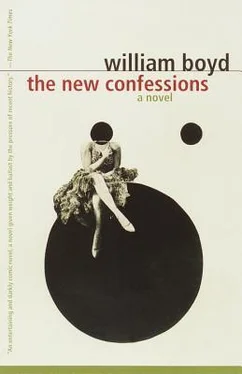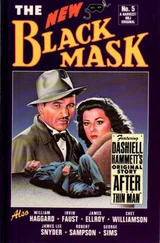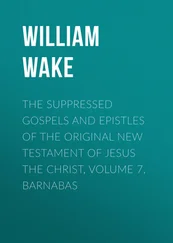As it now stood, Aftermath of Battle was twenty-two minutes long. What I now planned to do was film an actual battle sequence of ten or fifteen minutes’ duration that would act as a sort of prologue. It would not only alter the tone of the existing sequences, it would justify them. I could not be accused of “morbidity” in Aftermath if I had shown in all its raw potency just what had gone before.
It meant too, I realized, a return to the front line, but now, for some reason, I seemed to have lost all my fear and apprehension at this prospect. I became wholly absorbed in the task in hand. I was going to film battle sequences that would make Wipers look like a stroll in the park.
And for this to happen I required above all more mobility. I wanted battle sequences unlike anything else that had appeared in WOCC newsreels. In a field near the farm I practiced filming with the Aeroscope balanced on my shoulder. I ran, cranking the handle as best I could from side to side. A tin of these experiments was returned to me marked “defective,” as indeed they were. I could not turn the handle at the requisite speed to ensure proper exposure. I would be obliged to use the camera from a static base. *
I made my plans carefully over a period of two weeks. I was still supplying film for the WOCC, but I cannot recall what I shot at the time — it is of no interest, in any event (though sometimes in old newsreels I experience a spasm of recognition when I see, say, an ammunition limber stuck in the mud, or a line of gassed men at a clearing station). All my attention was now focused on my battle film.
I was still misleading Donald, I am sorry to say. I told him I had broken my tripod and I needed another. Duly provided with one, I cut its legs down to a length of eighteen inches. This way I could attach the Aeroscope to the tripod and carry them both together (they were heavy but manageable), and thus set them down and instantly begin filming from the necessary fixed and static base. The angle of all shots would be low, but this disadvantage would be outweighed by the stunning immediacy of the action.
The next task was to find a unit that would let me go forward with the advancing troops into no-man’s-land. This had never been allowed — or suggested — before. Faithfull boasted that scenes in The Battle of Messines had been filmed from shell holes in front of our line, but this was a lie. His barbed wire trick more than confirmed this.
After some thought I attached myself to an Australian battalion. They were in reserve at Reningelst, relatively fresh and expecting to be sent forward at any time. It was the beginning of October and the final assaults on the ruined villages of Poelkapelle and Passchendaele were imminent. (I had no idea of this at the time. My impression of the Third Battle of Ypres was extremely shadowy. It seemed merely that the fighting and shelling had been going on, with a few pauses and lulls for weeks and weeks. It was true to say that at any given moment somewhere in the Salient somebody was under fire.)
I picked the Australians because their discipline was lax and easygoing. They did not salute their officers and on several occasions I had heard enlisted men swear openly and vilely at officers in English regiments. To ingratiate myself, I filmed them for a few days at their usual rest-area chores and diversions and got to know their officers, particularly a young company commander called Colenso — a decent man, small-faced but with strangely large nostrils, which gave him a look of always being about to laugh or sneeze. The weather at the time was miserably cold and wet, with driving rain and gusting winds. At the correct moment I asked the adjutant if I could accompany them to the front when the order came. He was delighted.
On the tenth or eleventh of October I was informed that the Australians had gone up the line to relieve a battalion of the East Lancs on the Bellevue Ridge. Directions were provided and I went up to join them at dusk that night.
I remember my emotions on my return to the front with vivid clarity. I drove into Ypres and parked my motor in the lee of a ruined church, close to the transport lines of a Service Corps unit. Then I walked, carrying my Aeroscope on its short tripod, up the Ypres-Zonnebecke road. The light was fading and with the onset of darkness the traffic on the road increased. There was no sunset worth talking about. I walked east with an unwholesome sallow glow at my back. Apart from my camera, I was lightly burdened. I had a small haversack containing four rolls of film, a pack of fish paste sandwiches, two bars of chocolate, some malted milk tablets and two hundred Three Castles cigarettes — about a couple of days’ supply for me then. I had a gas respirator in a leather case and a water bottle containing three parts Scotch whisky to one part water. I wore my double-breasted greatcoat and had exchanged my lace-up boots for a pair of thigh-length rubber waders. I had gloves, a scarf and a tin helmet.
In that sulfurous light, the Ypres-Zonnebecke road looked a drab and dismal place. On either side were gun batteries, with their usual litter scattered about. Here and there were supply dumps, here and there apprehensive groups of men lying on bivouac sheets waiting for orders. From time to time an exploratory shell would come over from the German lines and throw up a shower of mud. I walked on, past the occasional shattered bole of a tree. Thankfully, it was too gloomy to see much of the corpses. They were in the process of becoming part of the ground and had a vegetable or tuberous look to them, some fungoid growth or boletaceous excrescence. White tapes marked where the road had once been. It was muddy — say three inches deep — but beneath it one had a firm footing.
At Zonnebecke, captured a few days previously, I left the road at what I took to be the correct point and followed a winding duckboard path through the flattened rubble of ruined houses, and then across what had once been fields. (What was it like? You know those corners of farmyards, or gateways to fields, where farm vehicles or herds of cattle have passed endlessly? It was like that, for mile after mile, with here and there the glimmer of water in the deep pools of the shell craters.) Ration parties were beginning to move now that it was safer, and relief troops were being brought up as replacements. Squally showers of rain bothered us as we picked our way through the dark.
By a fritter of bricks I came across a large taped area that had been a jumping-off point two days earlier. I was on the right track. To the left was the shape of an old German blockhouse. It was unusual to see something solid and hard amidst so much soft organic fluidity. This was the Australians’ battalion HQ.
I stayed there, getting a little sleep, until a runner took me up to the front line at four in the morning. There were no trenches. The Australians occupied a linked sequence of shell-hole rims and spade scrapes lined with a few sodden sandbags. I found Lieutenant Colenso and his company and explained my plan.
The barrage began at five-fifteen. I slithered out of my shell hole and crawled some twenty or thirty yards ahead into no-man’s-land with the Aeroscope strapped to my back. My ears were stuffed with cotton wool. The noise of the shells bursting on the obliterated village somewhere in front of me was reduced to a dull manic roar. I moved with pedantic slowness in almost total gloom, feeling ahead of me with my fingers gauging the texture of the mud. After about twenty minutes I found a suitable hole, crawled carefully into it, found that the water in its base was only a foot deep and set up my camera — pointing back at our line.
At six o’clock, in a tarnished silver light, through the clamor of the barrage I heard the whistles blow and started filming. Through the lens I saw the men of Lieutenant Colenso’s company get to their feet with a geriatric sloth and squelch through the mud towards me. No one attempted the impossible task of running. Machine-gun fire from the German strongpoints in the village began and a few men fell over. They did not collapse histrionically like the men in Faithfull’s film. Most stopped abruptly, sank slowly to their knees and fell forward, dead, their heads resting on the ground like Muhammadans at prayer. The semblance of a line broke and people started slogging forward independently as best they could from cover to cover. A dozen men splashed my hole. I picked up the Aeroscope and waded across the crater to the opposite lip. Here my truncated tripod served its purpose perfectly. Normally it takes five minutes to dismantle and set up, but now I was filming again within seconds. Turning the handle I peered through the lens at the dark soldiers stumbling forward. I panoramed slowly right to left, left to right. Little men moving with almost drugged slowness, some upright, some crouched, some dropping down. An irregular flattish skyline, some puffs of white smoke. Here was battle. It was the best and most authentic battle sequence filmed in the entire First World War — search your archives for something superior; it was inglorious, entirely chaotic and, if it had not been true, incomprehensibly and indisputably dull.
Читать дальше












